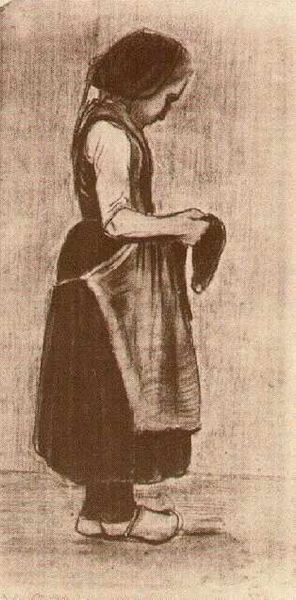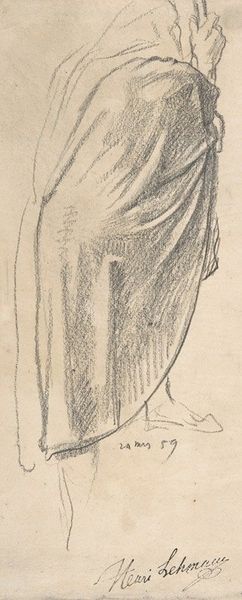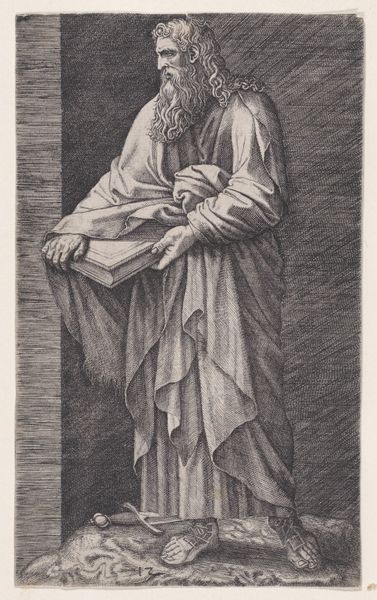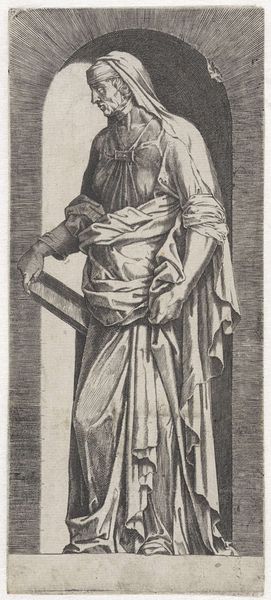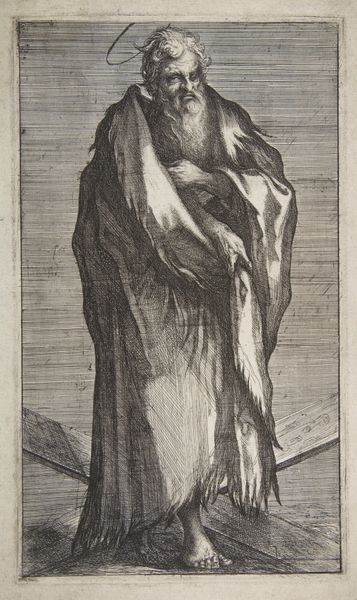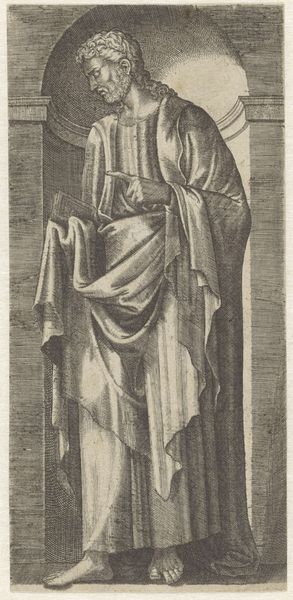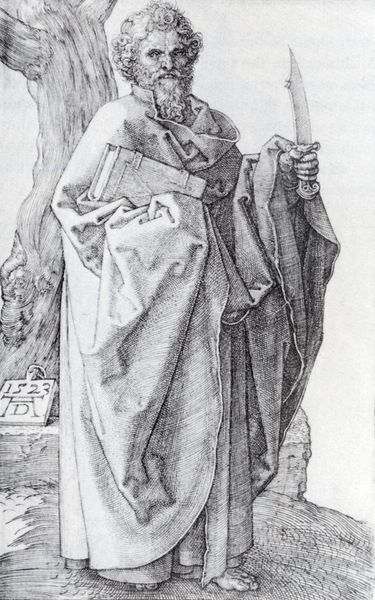
Copyright: Public Domain: Artvee
Editor: Here we have "Evening," an etching done by Arthur Bowen Davies around 1900. There’s something quite stark about the way the nude figure is rendered, with all those cross-hatched lines. How do you interpret this work? Curator: I see a very deliberate emphasis on the means of production. Look closely at the lines: they aren’t just describing form; they are the very fabric of the image. The etching process itself, the labour involved in creating the plate, it’s all laid bare. It challenges the idea of art as a window onto the world, pushing us instead to consider the material reality of the object. Editor: So you're focusing on the actual work that went into creating the piece? Curator: Precisely. The choice of etching, a process capable of mass production, is interesting too. Was Davies engaging with or critiquing the rise of consumer culture? And how does the depiction of the nude engage with ideas of labor, commodification, and the social body? Editor: That’s a really different way of thinking about it. I was focused on the Symbolist aspects, the sort of dreamlike mood. Curator: But can't the symbolic aspects and the materiality coexist? The figure exists within a social framework tied to material production and the means used to make and circulate such images. Considering these processes can only deepen your interpretation. Editor: That makes sense. I never considered the mass production angle, but the choice of a printing method changes the interpretation, I think. Curator: Exactly. And that brings a deeper context into how it reflects the emerging society of its time. Food for thought!
Comments
No comments
Be the first to comment and join the conversation on the ultimate creative platform.
